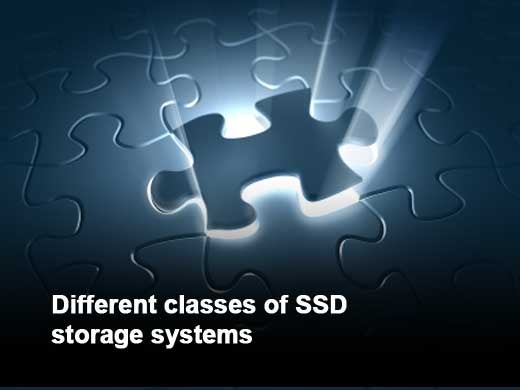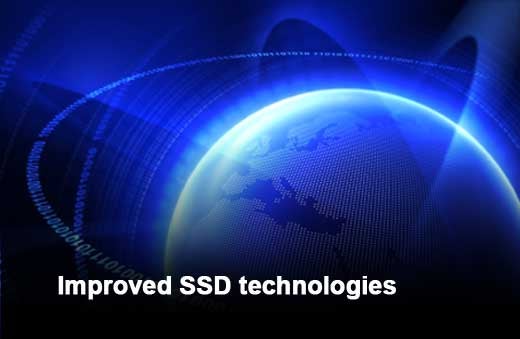In 2011, solid-state drives (SSDs) became one of the most innovative storage technologies to find their way into the data center in recent memory, pun intended. But all things considered, the real impact of SSDs probably won’t be felt until the second half of this year.
The folks at Nexsan, a provider of storage systems, have come up with a list of five SSD predictions that IT organizations should expect to see in 2012.
Click through for five SSD predictions for 2012, as identified by Nexsan, a provider of storage systems.
Slide 1
SSD storage system innovations improve IOPS and reduce end-to-end latency. Because of the inherent limitation in storage interfaces such as Fibre Channel and SAS, it can be difficult to create storage controllers that can support the million IOPS or more that the back-end solid-state storage could theoretically deliver. Vendors will develop creative alternatives for improving transactional performance. Technologies and approaches such as Infiniband-based controllers, PCI-Express controllers, the implementation of block-level deduplication, auto-tiering and caching will enable SSDs to achieve higher performance, especially in virtual environments.
Slide 2
IT organization will adopt a mix of industry standard and high performance SSDs to achieve higher performance rates — up to 10x for some applications — along with higher reliability and lower overall costs. Tiering of SSD between DRAM, SLC flash and enterprise-class MLC flash, will ultimately deliver bigger wins than tiering of different kinds of hard drives.
Slide 3
As SSD technology advancements continue their rapid evolution, vendors will become more engaged in reviewing SSD products to package the best available technology in their solutions.
Slide 4
SSDs will experience significant performance degradation as they approach full capacity. Storage systems must be re-engineered for these SSDs in order to get the most out of them and to achieve the financial savings and performance benefits promised.
Slide 5
Multi-Level Cell (MLC) SSDs designed for consumer applications will unfortunately find their way into the data center. As a result, reliability will suffer significantly as the expected life of an MLC SSD drive in a data center environment is typically no more than one year. This can result in catastrophic downtime if mission-critical data is placed on systems using MLC drives. Data centers will look for enterprise-class single-level cell (SLC) or eMLC drives instead.






